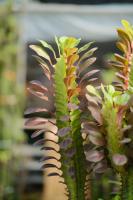Introduction
Tea is one of the most popular beverages in the world. It comes in different varieties, flavors, and colors, and is consumed by millions of people every day. However, one common misconception about tea is that all of them come from the same plant. In this article, we will explore this topic in detail and find out if it is true or false.
Tea Plant
The plant from which tea is derived is called Camellia sinensis. This plant is native to China, but is now grown in many other parts of the world, including India, Sri Lanka, Kenya, and Japan. The leaves and buds of this plant are used to make tea, which is why it is sometimes referred to as the tea plant. However, not all teas come from this plant.
Herbal Teas
Herbal teas, also known as tisanes, are not made from the leaves and buds of the Camellia sinensis plant. Instead, they are made from various herbs, flowers, and fruits. Some popular herbal teas include chamomile, peppermint, ginger, and hibiscus. While these teas may have similar health benefits to traditional teas, they do not contain the same compounds as tea made from the Camellia sinensis plant.
Types of Tea
Tea made from the Camellia sinensis plant comes in several different types, depending on how it is processed. These types include black tea, green tea, white tea, oolong tea, and pu-erh tea. Each of these teas has a different flavor and color, and is made using different processing methods. For example, black tea is fully oxidized, while green tea is not oxidized at all.
Conclusion
In conclusion, not all teas come from the same plant. While tea made from Camellia sinensis is the most common, there are also herbal teas that are made from different plants. Furthermore, even within the Camellia sinensis plant, there are different types of tea that are made using different processing methods. So the next time someone asks you if all teas come from the same plant, you can confidently tell them the answer is no.

 how many times do yo...
how many times do yo... how many planted tre...
how many planted tre... how many pine trees ...
how many pine trees ... how many pecan trees...
how many pecan trees... how many plants comp...
how many plants comp... how many plants can ...
how many plants can ... how many plants and ...
how many plants and ... how many pepper plan...
how many pepper plan...






























